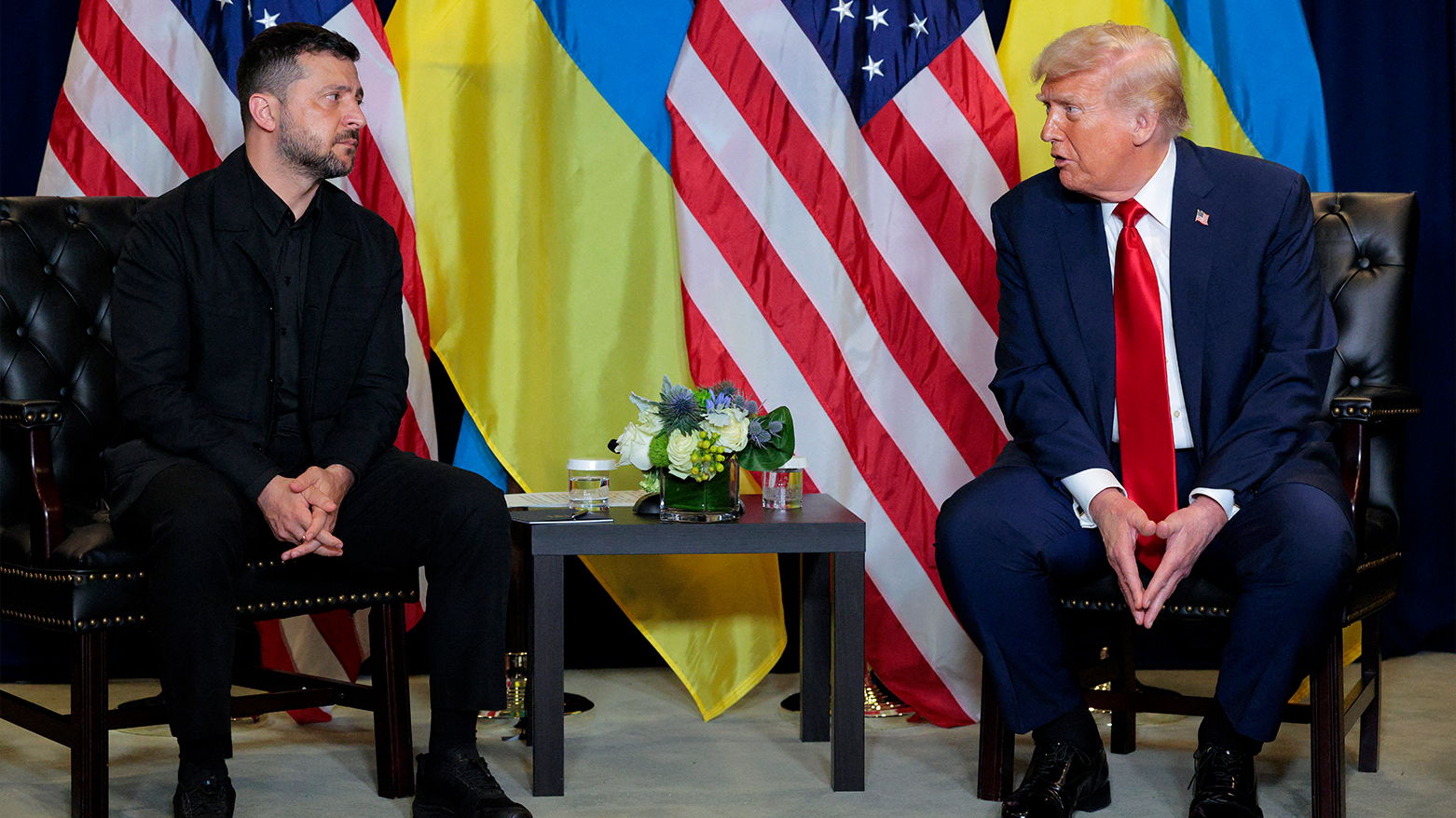US to Provide Ukraine Intelligence for Missile Strikes Deep Inside Russia: WSJ
The WSJ reports the U.S. will provide Ukraine with intelligence for missile strikes on Russian energy infrastructure, a major policy shift by Trump.

ERBIL (Kurdistan24) - In a significant and potentially transformative escalation of its involvement in the war in Ukraine, the United States will now provide Kyiv with intelligence for long-range missile strikes targeting energy infrastructure deep inside Russian territory, The Wall Street Journal reported on Wednesday, citing American officials. The decision, recently approved by President Donald Trump, marks a dramatic pivot in American policy and comes as the administration is actively weighing the delivery of even more powerful, longer-range weapons to Ukraine.
This move to directly aid attacks within Russia signals a new phase in the conflict, prompted by the stalling of President Trump’s diplomatic efforts to broker a peace deal and his growing frustration with Moscow's protracted and faltering invasion.
According to the detailed report in The Wall Street Journal, President Trump recently signed off on a directive allowing U.S. intelligence agencies and the Pentagon to assist Kyiv with these deep-strike operations. This is the first time, officials stated, that the Trump administration will actively aid Ukrainian long-range missile attacks against critical energy targets located far beyond the immediate front lines and well within the sovereign borders of the Russian Federation.
American officials are also reportedly urging their North Atlantic Treaty Organization (NATO) allies to provide similar intelligence support to Ukraine. This expanded intelligence-sharing represents the most definitive sign yet that President Trump is deepening his support for Ukraine after his initial diplomatic overtures to Russian President Vladimir Putin failed to gain traction.
While the United States has provided substantial assistance to Kyiv for its drone and missile attacks throughout the 3 ½-year war, this new level of intelligence sharing is qualitatively different. It is specifically designed to enable Ukraine to more effectively and accurately hit strategic assets such as oil refineries, pipelines, power stations, and other vital infrastructure far from its own borders.
The explicit goal of this new strategy, as outlined by The Wall Street Journal, is to cripple the Kremlin’s war machine by depriving it of the essential revenue and oil supplies required to sustain its invasion.
The strategic impact of this intelligence, especially if combined with more powerful weaponry, could be far more potent than Ukraine's previous strikes, potentially causing greater damage to Russia's economic backbone and forcing Moscow to redeploy its air defenses to protect its interior. One American official noted that they are currently awaiting formal written guidance from the White House before the intelligence sharing can commence.
The decision to provide targeting data is coupled with active consideration within the administration to supply Ukraine with a new class of powerful American-made missiles.
The Wall Street Journal, citing other administration officials, reported that deliveries of Tomahawk cruise missiles and Barracuda missiles, as well as other ground- and air-launched systems with ranges of approximately 500 miles, are being weighed. While officials stressed that no final decision on what, if anything, to send has been made, the mere consideration marks a major potential shift.
Ukrainian President Volodymyr Zelensky revealed just last week that he had specifically asked President Trump for Tomahawks. This request appears to be under serious review, with Vice President JD Vance confirming on Fox News on Sunday that the U.S. was considering Ukraine's appeal.

The potential provision of such weapons would dramatically extend Kyiv's reach. The Tomahawk cruise missile, one of the most precise weapons in the U.S. arsenal, has a staggering range of around 1,500 miles. This stands in stark contrast to the Army Tactical Missile Systems (ATACMS), which have a range of about 190 miles and whose use inside Russia has been severely restricted by the U.S. The administration recently approved the sale of Extended Range Attack Munitions to Ukraine, an air-launched missile that can travel between 150 and 280 miles, but the Tomahawk represents an entirely different level of capability.
This strategic pivot appears to be a direct result of President Trump’s stalled peace initiative. Since taking office in January, Trump has sought to broker a ceasefire as a pathway toward a final settlement. His initial strategy of offering President Putin economic and commercial incentives to halt the invasion has reportedly failed to gain any traction with the Russian leader, and a series of high-level meetings has not broken the diplomatic impasse. Frustrated by this lack of progress, the president has signaled a clear change in course.
According to The Wall Street Journal, Trump has received multiple briefings in recent days on the battlefield situation and has been focused on Russia's inability to make significant territorial gains. His public rhetoric has also sharpened, as evidenced by his speech at the United Nations last week. “Everyone thought Russia would win this war in three days, but it didn’t work out that way," Trump said. "It was supposed to be just a quick little skirmish. It’s not making Russia look good.”
The Kremlin, for its part, issued a restrained but probing response to the reports.
Kremlin spokesman Dmitry Peskov said on Monday that Moscow is carefully analyzing the American statements about potentially delivering Tomahawks to Ukraine. He raised critical questions about the level of direct U.S. involvement, asking, "Who can launch these missiles, even if they end up on Kyiv regime territory? Can only Ukrainians launch them, or will the American military do so? Who is assigning the targeting to these missiles? This requires a very thorough analysis.”
The American move has been welcomed by key European allies. Germany, a major contributor to Ukraine’s defense, has already invested around $350 million into developing Ukraine’s domestic industrial capacity to manufacture its own deep-strike capabilities.
Brigadier General Joachim Kaschke, who oversees Germany's military aid to Ukraine, explained the military logic behind the strategy to The Wall Street Journal. He stated that Ukraine needs assistance in three key areas: air defenses, holding the front line, and the ability to strike deep into Russia.
When facing a numerically superior adversary, Kaschke said, defenders must take the fight beyond the front lines. “You have to cut off the supply lines to hold the front line—that is the military logic behind it,” he explained.
The Defense Intelligence Agency and the Central Intelligence Agency both declined to comment on the matter when contacted by The Wall Street Journal, citing policies against discussing ongoing intelligence operations.
